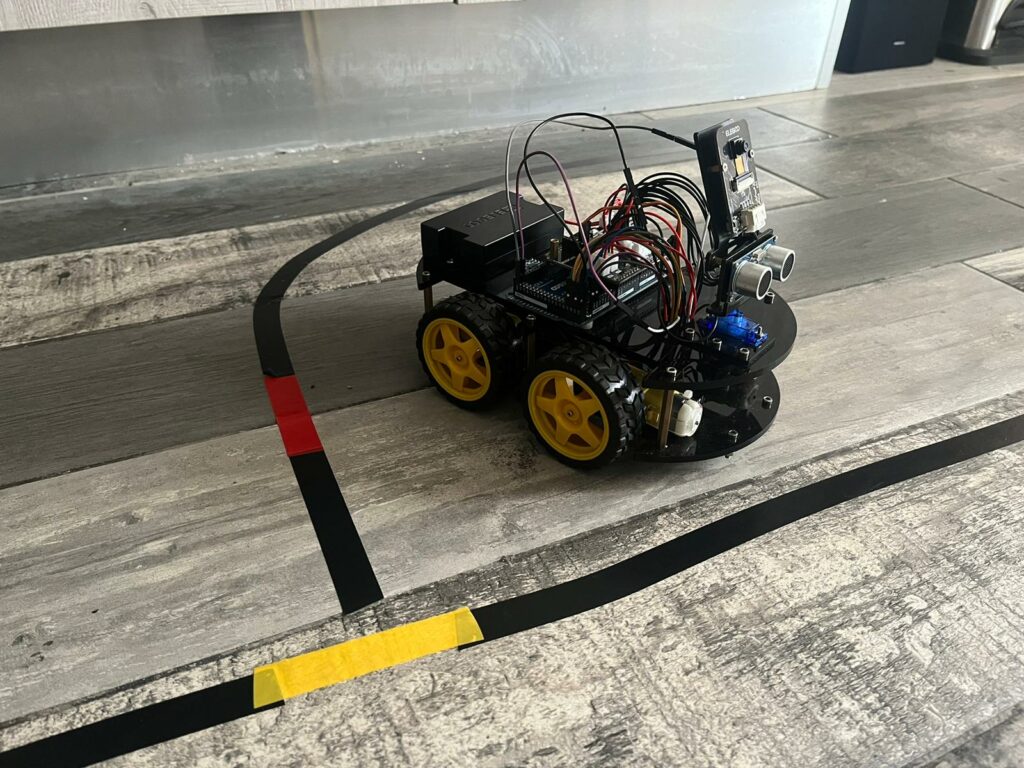A line-following robot is an autonomous mobile robot that can follow a predefined path. Such robots are typically used within industrial settings or hospitals because of their shorter transit times over longer distances. This project investigated various techniques used in line-following robots. Although the robot would still follow a dark path over a light-coloured surface, which is the traditional concept of line-following in autonomous land vehicles, a colour sensor was used to detect differently coloured entry points, that indicated different routes that the robot could take, each leading to a different destination. The robot was also equipped to sense the presence of obstacles along its path and to navigate around them.
An autonomous vehicle controlled by an Arduino microcontroller was built, with various sensors being attached to this robot. The proportional-integral-derivative (PID) and fuzzy logic (FL) controllers were developed for line-following and evaluated on their performance and efficiency. The Follow the Gap Method (FGM) was also implemented, in order to provide the robot with obstacle-avoidance properties.
To simulate a real-life scenario, such as an industrial setting or hospital for example, a track was laid out using mainly black tape and tape in a different colour. The black tape was intended to guide the robot as to which path to take, similar to a road. The coloured tape allowed it to navigate towards the correct route. The program for the autonomous vehicle required a single input, which corresponded to the colour to follow. The robot was set to follow the black tape using the PID algorithm or FL, until it found a ’stop’, which was defined by a specific-coloured tape. Upon encountering a stop, the robot checked the different entry points nearest to the stop, as defined by the differently coloured tape.
It was observed that, when any of the colours present matched the input colour, the robot kept moving forward in the direction of the correct colour, whereas in the absence of a match the robot tended to backtrack. Obstacle avoidance was also implemented by using the robot’s ultrasonic sensor, which made it possible for the robot to avoid the obstacle and get back on the line.

Figure 1. The mobile robot and a stretch of the track
Student: Nicholas Masini
Supervisor: Prof. Matthew Montebello
